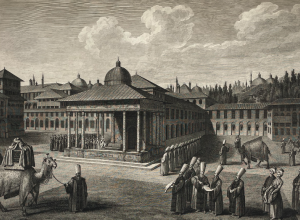September 2015 |
Slovenian Novel Offers Myriad Ways to Read It

Slovenia is a coastal Alpine country smack in the middle of Eastern and Western Europe, and it isn't exactly known for its literary history. The earliest Slovenian texts are religious treatises, dating from around 1000 AD, and only three of those exist. After a flurry of Protestant writing in the 1600s, Slovenians didn't start writing in earnest until the 19th century, when poets, Romantic novelists and playwrights began forming a national literary identity. World War II didn't help the nascent writing community, when Axis powers divided the country and banned citizens from speaking their native tongue. It wasn't until 1991, after Slovenia successfully fought for independence from Yugoslavia, that the language was allowed to flourish once again.
Now, Slovene literature is moving into exciting territory, with author Bojan Meserko at the helm. After writing science fiction, poetry, and fantasy novels, Meserko's latest offering may perhaps best be described as experimental literature. 69; A Ti O Tem Pojma Nimaš (69; But You Have No Idea Of It), offers readers a unique experience in non-linear reading. Hardbound with a black jacket covered by fuschia flowers, by all exterior appearances it looks like any other volume. However, inside the covers is a wooden reading frame, and nestled within that reside 69 unnumbered pages, with text facing up and down. In an email, Meserko said that this setup gives readers the freedom to choose their own adventure: "Pages can be mixed and turned as you want, and each time I give a copy of my book to a reader, I mix up the order of the pages, making that copy totally unique from others." (Only 150 exist in print.) He also calculated that the book has infinite different combinations, and that each permutation yields a coherent text.The general storyline follows a man and his thoughts on village life and those around him, and the particulars change depending on how the book is read.
French writer Raymond Queneau did something similar with his 1961 publication, A Hundred Thousand Billion Poems, where he wrote a series of ten sonnets, where any line of any sonnet could be combined with any nine other lines, and the rhyme scheme and sound would remain intact. And while Queneau enlisted a mathematician to make sure his book would make sense, Meserko worked his text out on his own. Using the physical constraints of paper and type, Meserko is exploring new and exciting patterns of writing and looking at literature, one page at a time.

Correction: This entry previously said that there were 276 ways to read the book.In fact, there are an infinite number of possible combinations.















